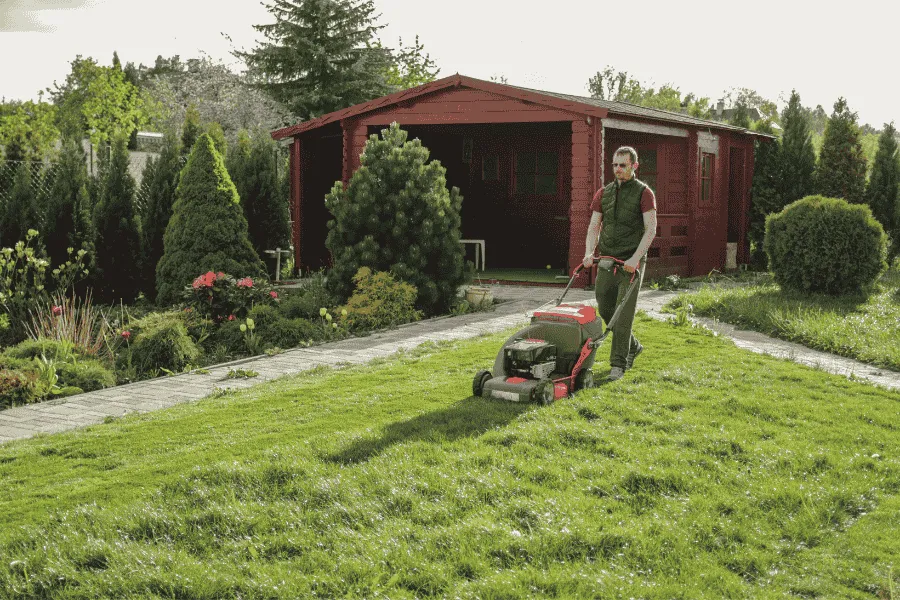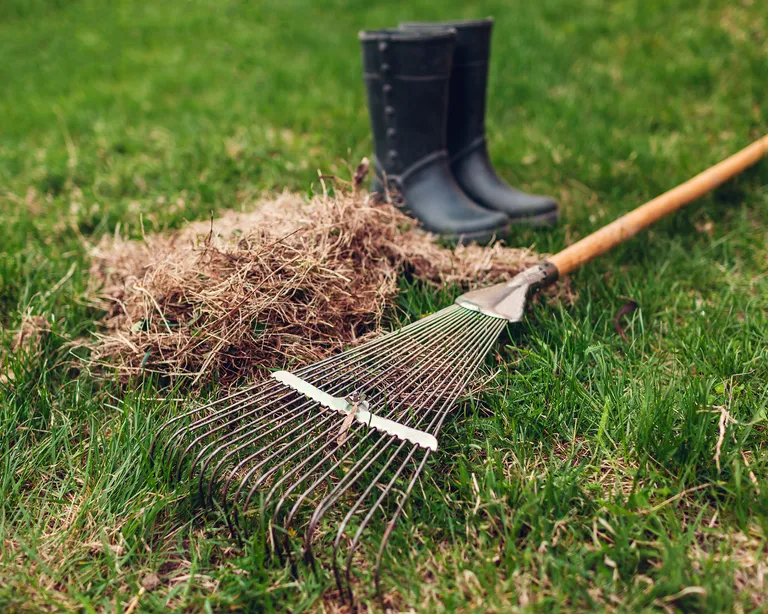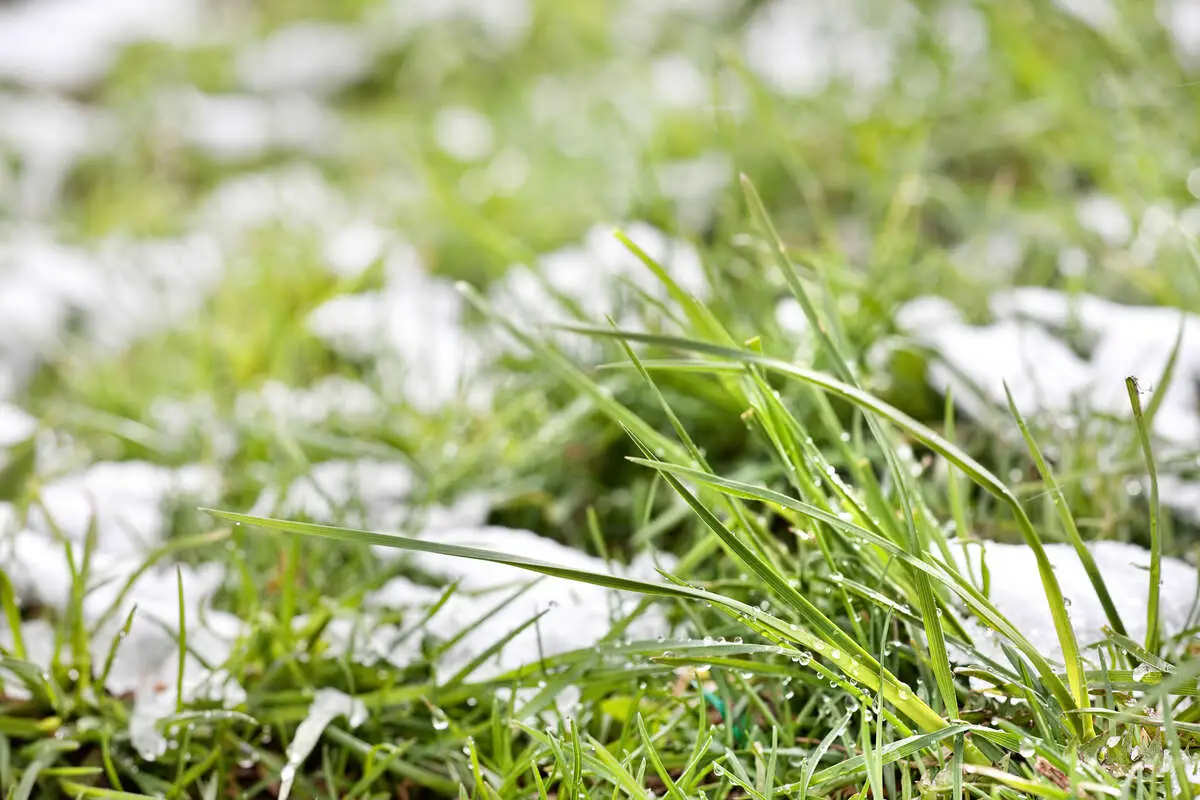How Short to Cut Grass Before Winter?
Last Updated on October 1, 2025 by Duncan
The height you cut your grass before winter has an impact on its health. Cutting it too short gives stress on the grass, whilst leaving it too long encourages mold and insects.
If you are wondering what is the right height to cut your grass before winter, cut it 2 to 2.5 inches tall before the winter season.
Typically, this entails mowing warm-season grasses half an inch higher than usual and cool-season grasses half an inch lower.
Should you cut the grass taller or shorter before winter?
How short you cut your grass before winter is determined by the type of grass you grow and where you live. If your lawn has heavy snow and mold troubles, trim your cool-season grass short.
Low mowing discourages pink and gray snow mold, which appear in spring as the snow melts.
Snow molds are particularly abundant in cool-season grasses, where they thrive on cold, wet, matted lawns. Long grass promotes these conditions, whereas short grass discourages them.
Mowing low deters voles and other pests. These little animals prefer to nest on taller grass, so a shorter cut keeps them from overwintering on your lawn.
This somewhat lower mowing height for the final trim of the season also aids in the removal of turf and plant waste, as well as ensuring that the grass does not become too tall if it is still growing.
If your lawn is cold-damaged, cut your warm-season grass taller.
Warm-season turfgrass is more vulnerable to cold damage because it is best suited to the warm southern United States. Although not scientifically established, higher mowing heights are thought to prevent warm-season turf winterkill.
A taller cut gives your warm-season grass blades more leaf area for photosynthesis, potentially reducing winter harm. Increased height also helps to crowd out weeds and improves the lawn’s traffic tolerance.
To be on the safe side, increase warm-season grasses mowing height by half an inch to prepare them for winter.
When should you stop mowing for the year?
Don’t get ahead of yourself with the final cut of the year; continue mowing as long as your grass grows. So, when does the grass cease growing? Does grass grow during the winter?
When air temperatures fall regularly below 55 degrees Fahrenheit, it is usually too chilly to mow the lawn. The grass is dormant, therefore you must cease mowing.
Cool-season grasses stop growing when the soil temperature falls below 40 to 45 degrees Fahrenheit. Warm-season grasses have a varied seasonal growth cycle and can go dormant when average soil temperatures dip below 50 to 55 degrees Fahrenheit.
The first frost of the year is also an indication to stop cutting the lawn. By the first frost, your lawn should be at winter cut height.
If you live in a mild climate, your grass may thrive all year. In such case, you’ll have to mow some over the winter.
How to prepare your lawn for the last mow of the year
Your last mowing is one of the most important steps in preparing your lawn for winter. Here are some steps to make your last mow count:
Sharpen the mower blades. A tidy cut is essential for a healthy lawn. Dull blades shred grass, making it more susceptible to disease. Sharpened blades produce a cleaner cut, letting the grass recover more quickly. So, ensure that you thoroughly mow your blades before you get to work.
Cut to the right height: For cool-season grasses, aim for 2-2.5 inches, whereas warm-season grasses should be 1.5-2 inches long. This optimum height helps to protect your lawn during the winter.
Clear debris: Remove any leaves, sticks, or other debris from your lawn. This is because debris can choke grass, creating a breeding environment for mold and vermin. Clearing it away lets your grass breathe.
Check for problem areas. Look for signs of sickness, fungus, or bare spots. Addressing these concerns before winter can prevent them from worsening and reduce the need for repairs in the spring.
Best practices when mowing in winter
Do not mow wet grass.
Mowing damp grass in the winter can damage your lawn and machine. Wait until the grass is completely dry before mowing to achieve a neat cut.
Water your yard less often.
During the winter, cooler temperatures and more rainfall allow you to water your lawn less frequently. When you do, water deeply and keep the soil moist but not waterlogged.
Keep your lawn clear of debris.
Before mowing, ensure sure your grass is free of trash like sticks and rocks. This will assist to reduce mower damage while also keeping your lawn looking tidy and well-maintained.
Do not overfertilize.
During the winter, your grass will require fewer nutrients than during the growing season. If necessary, use a slow-release fertilizer sparingly to minimize over-fertilization and stress on your lawn.
Avoid mowing during a frost.
Mowing your lawn during frost can harm the grass and cause soil compaction. To avoid damage, wait until the frost has melted and the grass has dried before mowing.
FAQs
Can you mow your lawn in winter?
You should avoid doing it unless you reside in a warm, subtropical area. Dormant or frozen grass is particularly vulnerable to harm, and the mower will leave unsightly tracks in the moist soil.
Should you cut new grass before the winter?
Yes, you should cut new grass before winter, particularly for northern grasses such as Kentucky bluegrass, perennial ryegrass, and fescues. If you seed the grass at the appropriate time, you’ll have plenty of time for a few mowings before dormancy and frost.
Is it dangerous to trim grass before it freezes?
You should avoid cutting the grass if frost is expected within the following two days. Frost slows grass growth, making your turf more susceptible to diseases and pests.
Bundle up and let the professionals handle it.
If your fall schedule does not allow for such meticulous attention to detail in your lawn, contact local lawn care experts for a quick quote. They will mow your lawn, remove leaves, and get it through the fall and winter months.
Parting shot
Maintaining a healthy and beautiful lawn in winter necessitates a different approach than during the growth season.
By following the tips given above, you will keep your lawn looking healthy and well-maintained throughout the winter months.
Remember to adjust the mower blades, prevent cutting the grass too short, and mow less often. Keep your mower blades sharp, don’t mow damp grass, and water your lawn less frequently.
You also should remove waste from your lawn, prevent overfertilizing, and do not mow when there is frost on the grass.


